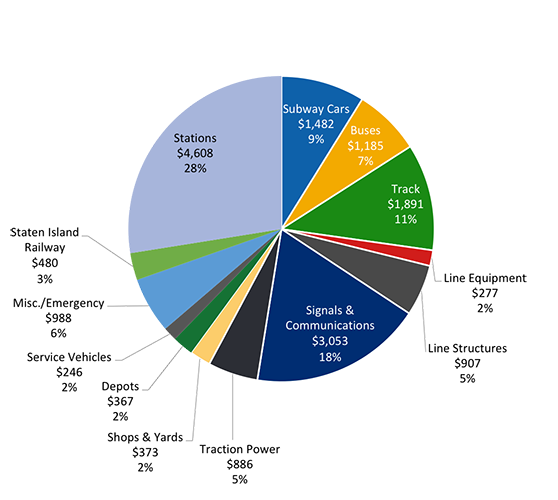A Fully Funded MTA Capital Plan Invests $6.1B into H.V.’s Economy
NEW YORK—The MTA Capital Plan for 2025-2029 will generate $106 billion in economic activity and more than 70,000 jobs statewide, according to a new analysis commissioned by the Partnership for New York City.
The report—which was released at the annual meeting of the New York Building Congress on Jan. 23 that was attended by more than 500 construction industry and union leaders—describes the impact of the MTA’s proposed capital investment if the plan is approved and fully funded during budget negotiations between the governor and the state Legislature.
The MTA plan proposes investing $68.4 billion in capital improvements and state of good repair of the regional mass transit system. If fully funded, the 2025-2029 Capital Plan will generate new economic activity for all ten regions of the state. More than one in four jobs will be created outside of New York City, and the average direct labor income would be roughly $119,000 per worker.
While most of the direct spending will be in New York City, Long Island stands to gain more than $7.5 billion in GDP and over 10,400 jobs. The other regions

will also realize substantial benefits, including: $6.1 billion in GDP and an estimated 9,160 jobs in the Hudson Valley; $50 million and 90 jobs in the North Country; $120 million and 200 jobs in Western New York; $80 million and 140 jobs in the Finger Lakes; $60 million and 100 jobs in Central New York; and another $60 million and 100 jobs in the state’s Southern Tier.
“This analysis indicates that fully funding the MTA’s proposed capital program will be a ‘win-win’ that will catalyze critical improvements in transit service and provide a major boost to the state’s economy,” said Kathryn Wylde, president & CEO of the Partnership for New York City. The study was conducted by EY (Ernst & Young Global Limited).
“This new report confirms what we’ve been shouting from the rooftops for years: Fully funding the MTA’s proposed Capital Plan will pump $106 billion into New York’s economy and create 72,700 jobs—over 18,000 of them outside the city. From Long Island to the North Country, this plan delivers a historic jolt of opportunity that benefits every corner of our state. When we invest in transit, we’re not just boosting ridership, we’re fueling engineering, architecture, construction and professional services—ensuring our region stays competitive, modern and ready for the future,” said Carlo A. Scissura, Esq., president & CEO of the New York Building Congress.
